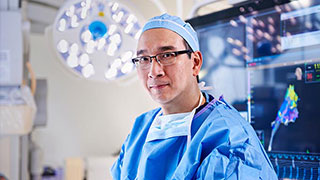Expert Care and Top Accolades
A bone marrow transplant replaces unhealthy bone marrow – the tissue inside bones that produces blood-forming cells – with healthy cells that should restore normal blood cell production.
Bone marrow transplants are used to treat people with:
- Cancers of the blood, bone marrow, and lymph nodes
- Other blood and immune disorders
At UT Southwestern, we perform bone marrow transplants and cellular therapies for patients ranging in age from early adulthood to their 70s.
Our program at UT Southwestern is accredited by the Foundation for the Accreditation of Cellular Therapy, which recognizes top-quality patient care. We also have been deemed a national center of excellence by all major national health insurance carriers.
Our experienced physicians, nurses, and other care providers guide patients through every step of the bone marrow transplant process. We strive to deliver the most appropriate and effective care possible, and we’re here to manage care from diagnosis to personalized treatment and beyond.














